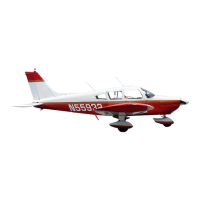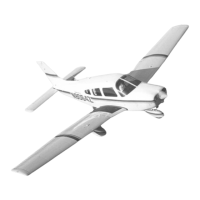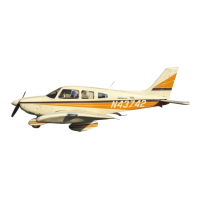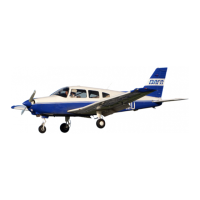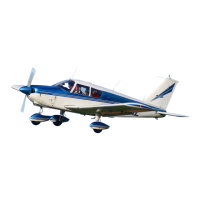FIXED-OXYGEN SYSTEM.
INSPECTION AND MAINTENANCE.
Due to the nature of the process used to test compressed gas tanks, servicing and hydrostatic tests must be
conducted by a DOT or manufacturer (Scott Aviation) approved shop. The following material gives
recommended inspection and maintenance information for the various parts of the oxygen systems.
—NOTE—
Oxygen cylinders are identified by the ICC or DOT identification
stamped on the cylinder. The standard weight cylinder (ICC or
DOT 3AA 1800) must be hydrostatically tested at the end of each
5 year period. Lightweight cylinders (ICC or DOT 3HT1850)
must be tested every 3 years and be replaced after 4380 refills or
24 years, whichever comes first. The month and year of the last
test should be stamped on the cylinder beneath the ICC, DOT
identification.
1. Check the outlets for leakage both in the use and non-use condition, and for leakage around an inserted
connector. For leak testing information refer to the appropriate subject in this chapter.
2. Check the high pressure gauge for accuracy by comparing its indicated pressure with that of a gauge of
known accuracy connected to the fill port.
3. Inspect tank for dents, bulges, corrosion, and major strap chafing marks. Should any of these problems
exist, the tank should be removed and hydrostatically tested.
4. An operational check of the regulator can be accomplished as follows: (Refer to Figure 35-3.)
A. Interconnect a sensitive pressure gauge of a range of 0 to 100 psi, with a Scott Aviation 8570-00
plug-in, and connect the apparatus to the pilots outlet in the overhead panel. It is recommended
that a hose of 1/4 in. I.D. x 1/2 in. O.D. and 18 inches long be used.
B. Interconnect a pneumatic flow apparatus of a range of 0-5 liters per min (l pm.), with a Scott
Aviation 8570-00 plug-in. Use the same hose dimensions as explained in the last step. Connect the
flow apparatus to the co-pilot’s outlet.
C. Insert a Scott plug-in in each of the other outlets and pull the oxygen control knob to the on
position. The pressure and flow should be 55 to 80 psi and 3.3 to 5.31 pm. respectively, at sea
level.
D. There should be no external leakage anywhere on the regulator when it is turned off, and all
fittings leak free.
5. Check airframe log book for last maintenance on oxygen system and perform as required per Chart
3502.
6. Test the oxygen for odor. Pure oxygen is odorless and tasteless. Any system having a significant odor
present in the gas should be purged and the bottle replaced or removed and purged.
7. Any fittings, connectors, and tubes which have imperfect threads, pitted or disfigured cones, or other
damage should be replaced.
—CAUTION—
Oxygen tubes must not be clamped to or supported by electrical
wire bundles, hydraulic, pneumatic or other lines.
8. Check plumbing for kinking, cracks, gouges, dents, deep scratches, or other damage, and replace as
necessary.
35-10-02
Page 35-05
Added: November 6, 1979
2H3
PIPER AIRCRAFT
PA-28RT-201 / 201T
MAINTENANCE MANUAL
